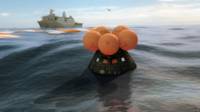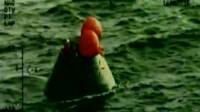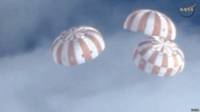- December 5, 2014
Post

The landing capsule of the spacecraft of NASA “Orion”, designed for long-distance space travel, including to Mars, successfully returned to Earth.
The capsule splashed down at the scheduled time in the Pacific Ocean, off the coast of California.
“Orion” was launched rocket “Delta-4″, the largest rocket its kind held by NASA.
Three hours after the start of “Orion” has reached its maximum altitude of 5800 km, before moving on to the most difficult part – the descent into the atmosphere at a speed of 32,000 km / h.
“Orion” with the heat of 2,200 degrees Celsius – that’s twice as hot than molten lava. The force of gravity in the module at eight times the normal earth.

Within minutes were disclosed 11 parachutes, including three major, huge size. This will reduce the speed of the module up to 20 km / h.
At this speed the capsule sank in the Pacific Ocean, 1014 kilometers south-west of the US city of San Diego, Calif.
A landing area are US warships, which with the help of divers must raise a floating capsule on board.

“Orion” was created for missions to the Moon and Mars.
During the first 4.5-hour flight tested the main components and functions of the ship, including a system of parachutes and thermal protection module .
Start the ship was postponed several times. At first, this was done because of the efforts of the wind, then because of problems with the fuel valves one of the missiles.
In appearance “Orion” is not much different from a series of capsules “Apollo”, which were used for manned flights the moon in the 60s and 70s of the last century, but the “Orion” is much larger and equipped with modern management systems and life support.
No comments:
Post a Comment